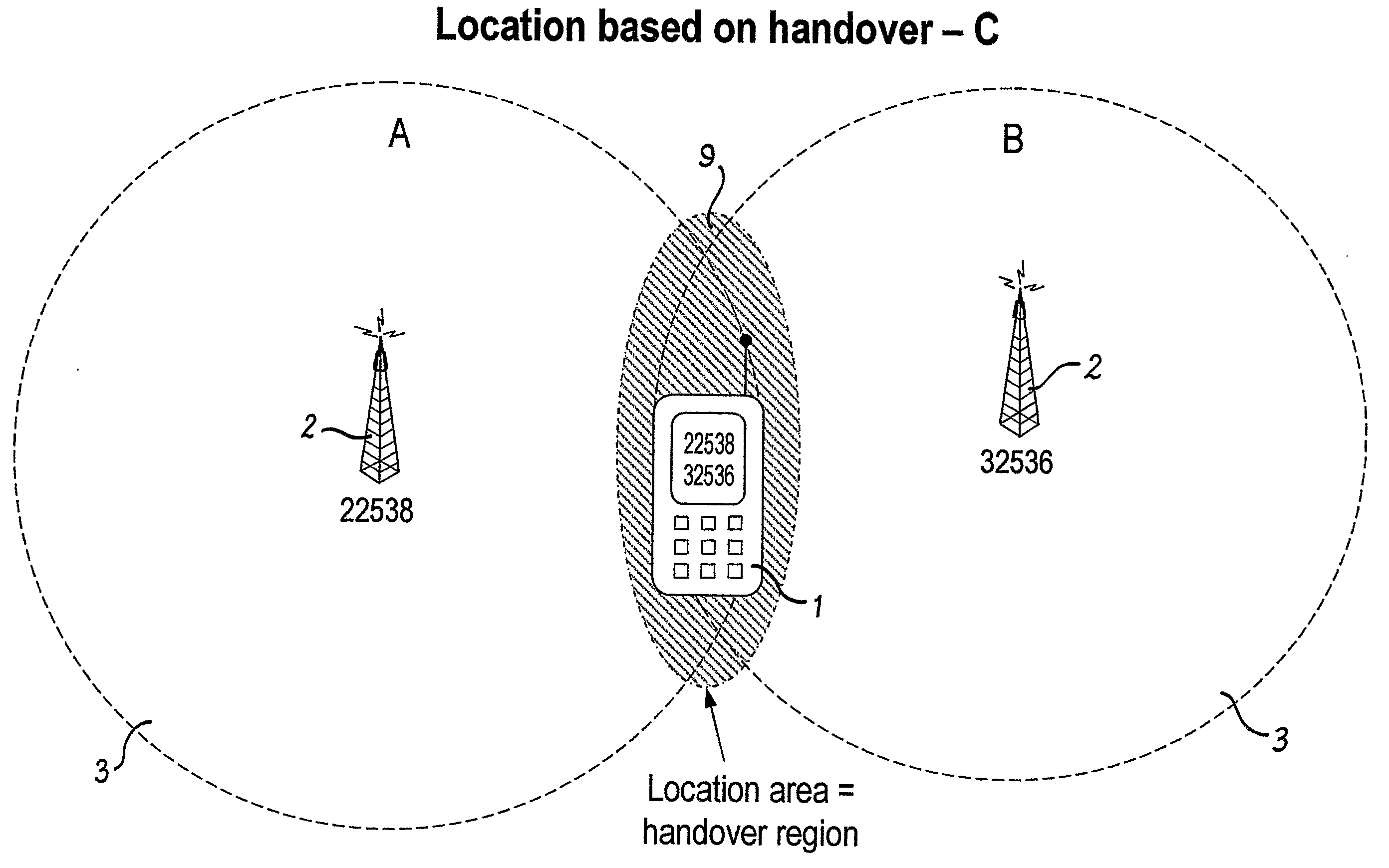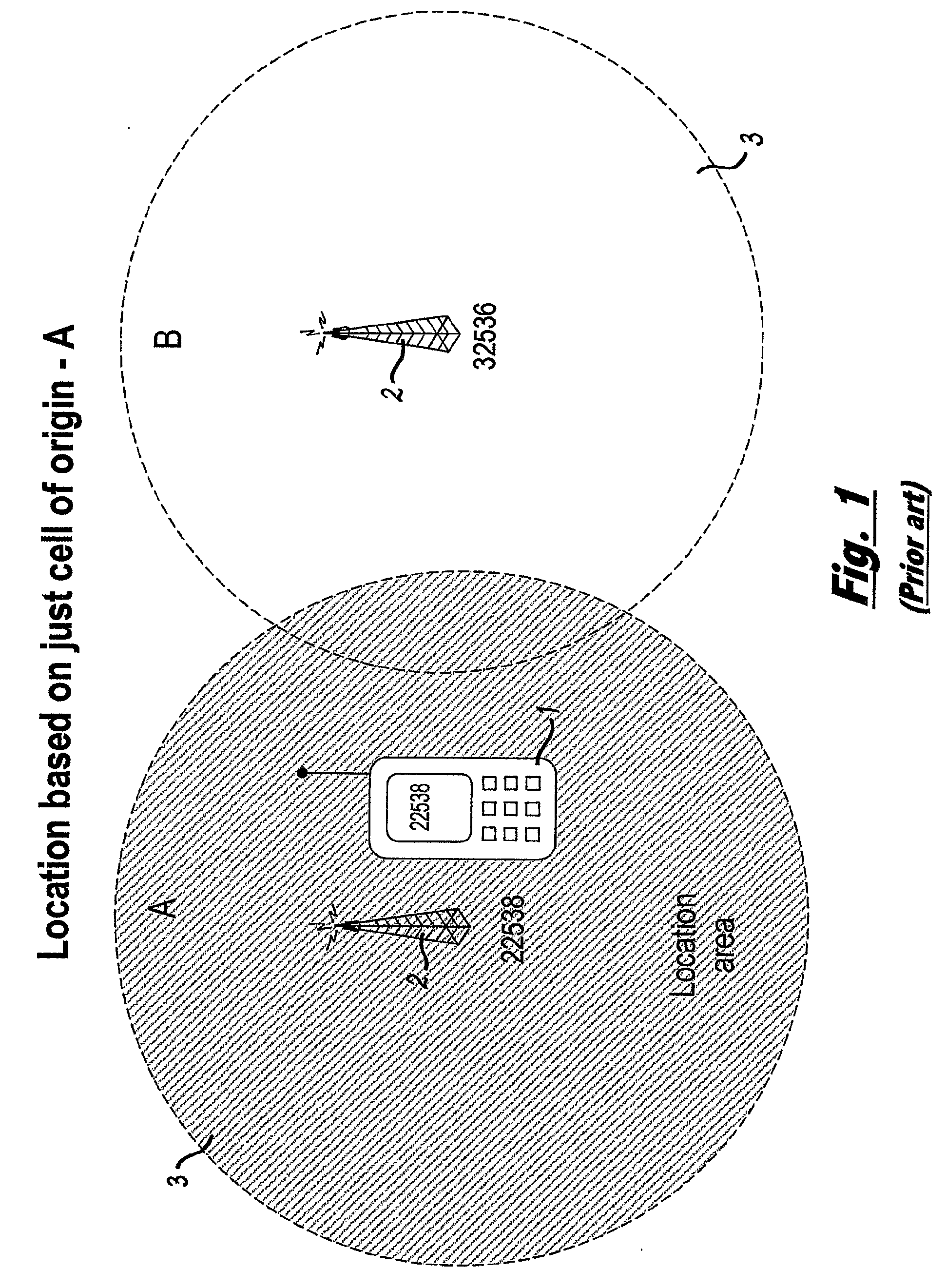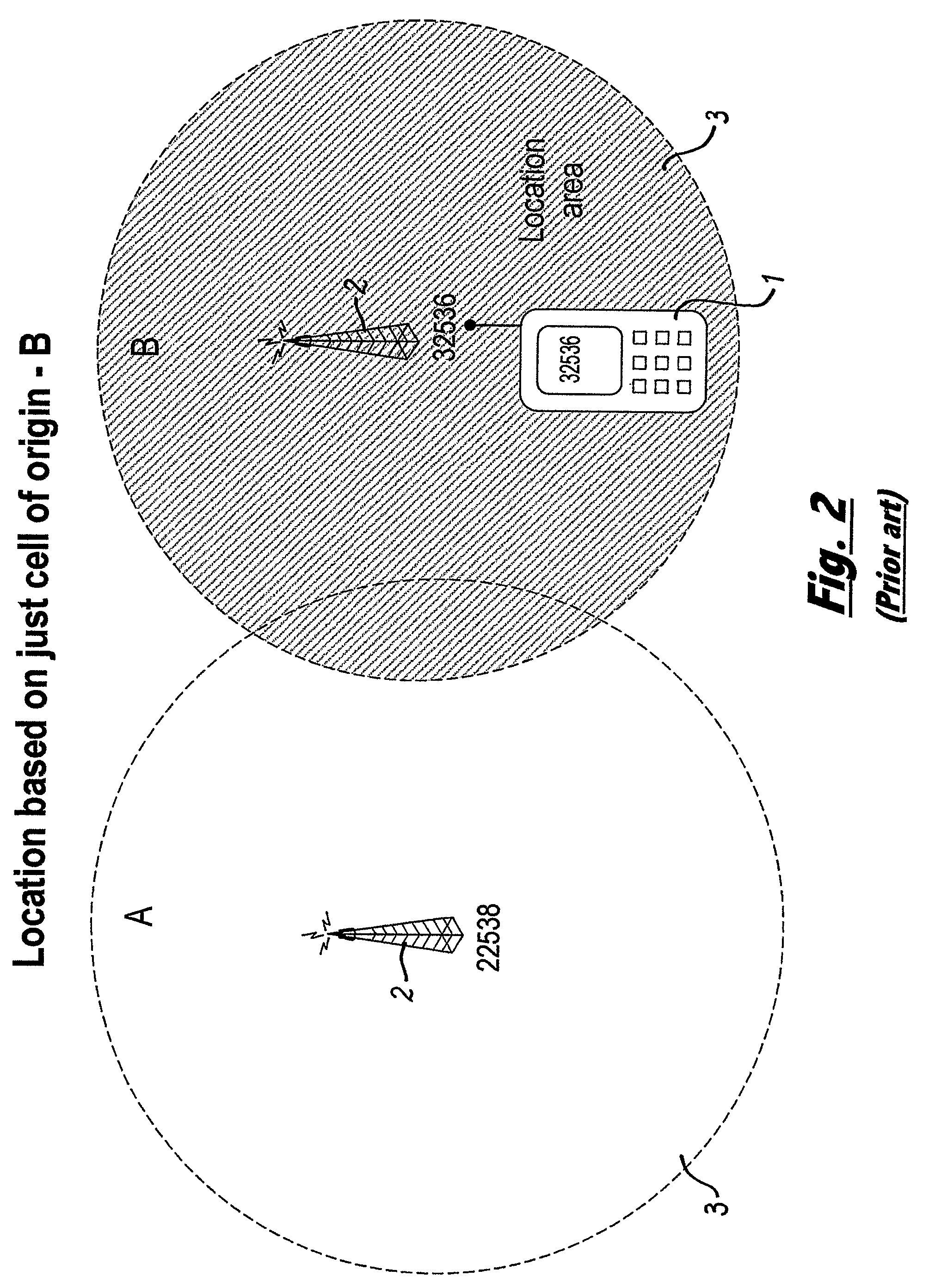Method Of Locating A Cellular Terminal
- Summary
- Abstract
- Description
- Claims
- Application Information
AI Technical Summary
Benefits of technology
Problems solved by technology
Method used
Image
Examples
Embodiment Construction
[0078] A first embodiment of a method of locating a cellular terminal 1, in accordance with an aspect of the present invention, involves the execution of a software application within the cellular terminal 1 that allows the cellular terminal 1 to communicate with a central database 4 stored on a server 5.
[0079] From the schematic representation of FIG. 3 it can be seen that in practice the central database 4 comprises five separate databases 4a-e, namely: [0080] 1. A cell location database 4a that holds a record of cell IDs against physical location for the centre of that cell coverage. This information is used to calculate data for inclusion in the handover database; [0081] 2. A handover database 4b that is the main database used to provide location data. This database holds data for cell handover pairs (or triples or quads) and files physical locations against these; [0082] 3. A netlist database 4c that provides a record of how cells 3 are connected to each other, as defined by o...
PUM
 Login to View More
Login to View More Abstract
Description
Claims
Application Information
 Login to View More
Login to View More - R&D
- Intellectual Property
- Life Sciences
- Materials
- Tech Scout
- Unparalleled Data Quality
- Higher Quality Content
- 60% Fewer Hallucinations
Browse by: Latest US Patents, China's latest patents, Technical Efficacy Thesaurus, Application Domain, Technology Topic, Popular Technical Reports.
© 2025 PatSnap. All rights reserved.Legal|Privacy policy|Modern Slavery Act Transparency Statement|Sitemap|About US| Contact US: help@patsnap.com



